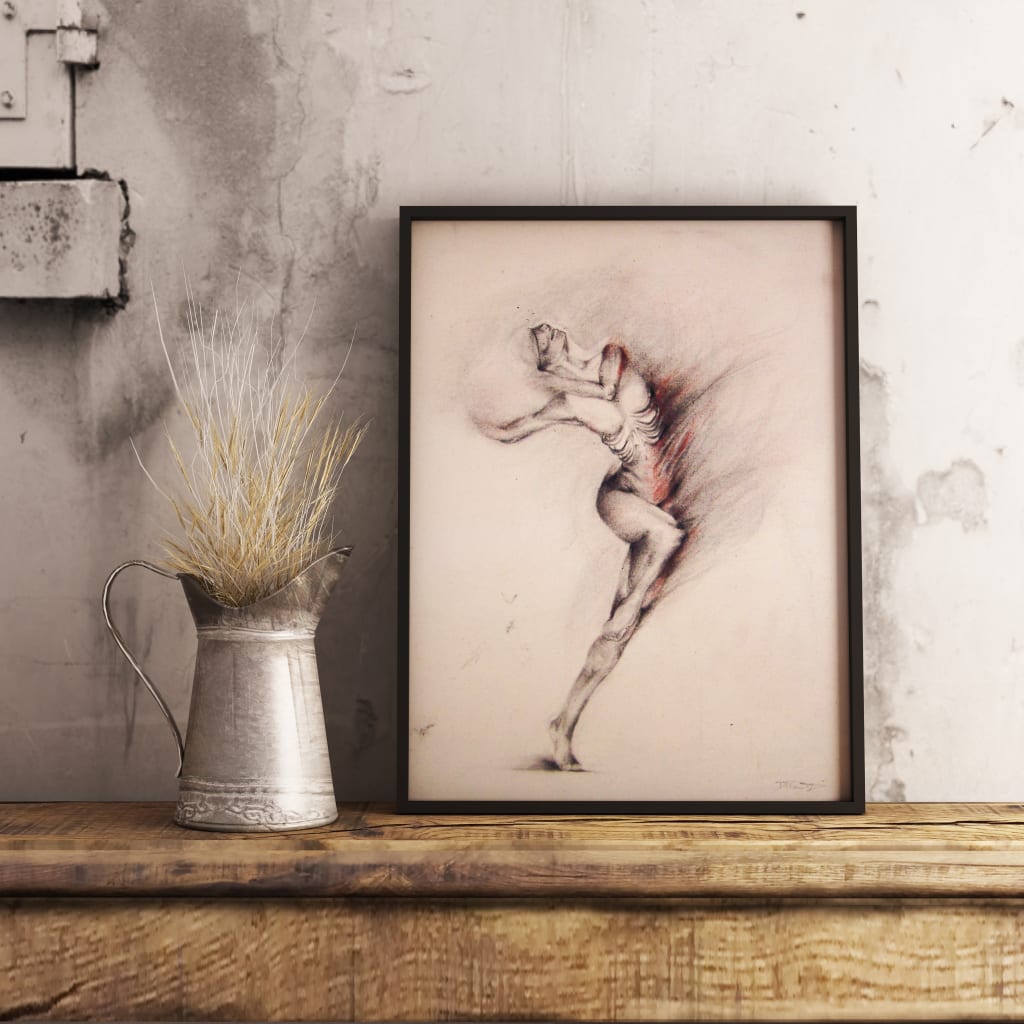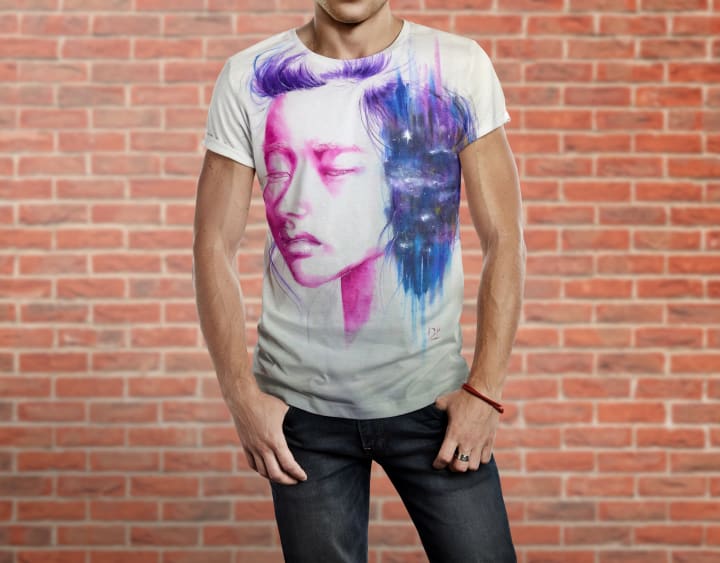Working With Fabrics
Information for Beginning Artists.

Being a beginner in art or simply trying to understand art from a professional’s point of view can be intimidating. This intimidation can turn you away from trying new things. When my art professors introduced me to fabric, I stirred away from it for a while. The thought of making this incredible piece on a fabric was quite invigorating, but thinking about the thought process itself, not so much.
The two examples that I give you differ in fabric for a more diverse background on this subject. My ‘Release’ art piece is displayed on canvas built with wood, covered in a thick brown cloth that can be found at simple stores like Target or simpler stores that only deal in fabric. For this piece, I used a combination of black charcoal, red Conté, and the smudging technique.
Red Conté: Another form of art charcoal that contains a smoother consistency.
Black Charcoal: A harsher and dustier art utensil that is best modeled from regular, barbecuing charcoal; it creates smooth smudges that often include shadows and shading.
Smudging Technique: A technique that allows the artist to create shading and shadows; helping the artwork look more realistic; can often be used with fingers or a towel of any material.
When working with a heavier piece of cloth, you want to make sure the material you are using isn’t too scratchy and you know how to handle it. The tools (listed above) that I chose are all smooth when using and yes messy, but a messiness that I can control. Using a piece of paper to place under your arm or hand that might smudge the work, is also a go to when working with these materials. You can start with an outline as I did before I began the piece, but again, it must be smooth or the tool you are using will scratch on the heavy cloth and bits of fabric will pull out. Plus, smoother tools allows more freedom with the direction of your art.
It's okay to be nervous when attempting this. You probably cannot tell, but a multitude of sketching went into this piece before shading. Taking your time and slowly building your character, portrait or scenery ensures a successful outcome. The best part of messing up on this fabric is it's cheap and buildable. Allow some freeform when starting this, it'll make you less nervous and give your artistic side a little more freedom. The cloth adds a subtle but appreciative texture to your piece and gives it a little more personality.

Title: Open - an acrylic piece
For my second piece, ‘Open,’ I used a t-shirt as my material and acrylic along with watercolor paints as my tools and of course, a paint brush. If you are painting with t-shirts, make sure to go for cotton or polyester. This allows for good absorption of the paint but not to a point where it becomes too messy.
Acrylic Paint: a fast-drying paint that is water-soluble but also becomes water-resistant when drying; depending on how much you dilute it with water, it can become thin and gliding like watercolor or thick and pasty like oil paint.
Watercolor Paint: paints that are easily thinned and usable when suspended in water; the paints are slowly made into pigments.
Acrylic Brush: brushes that are made for the diversity of acrylic paints; have a harsher bristle.
Watercolor Brush: brushes that are made for the smoothness of watercolor paints; has a softer bristle; feels more like feathers.
It is important that you use your appropriate brushes simply because every paint reacts differently. I, of course, learned this the hard way. Acrylic paints allow a longer use of the t-shirt if you wish to wear your work in the future, while the watercolors work well for little accents of detail in whatever you are painting. Try not to start off with watercolor paints but instead the acrylics. The acrylic paints hold a stronger base and run much smoother on soft fabric like t-shirts. They also take longer to dry on fabric that is wet. This is good for any potential mistakes. Watercolors dry too fast on t-shirts but it does help to add a little flavor to your art. After all, when painting on t-shirts you must use a ton of water (hence the good absorption material like cotton or smoother surfaces like polyester).
No matter what fabric or style you choose, make sure to be slow and steady, they always win the race. Paint and charcoals are quite tricky to change once they’re set, but don’t let this deter you away from trying new things. You may be a beginner or just not used to different fabrics, but they can be quite fun to do. I actually found the t-shirt one to be quite exciting, but don’t stop here, try other forms of fabric. Experiment. Make learning new experiences fun for yourself.
About the Creator
Danyel Poindexter
I am a freelance writer and artist who focuses on writing about artwork, gaming, books, performances, and other entertaining subjects.






Comments
There are no comments for this story
Be the first to respond and start the conversation.